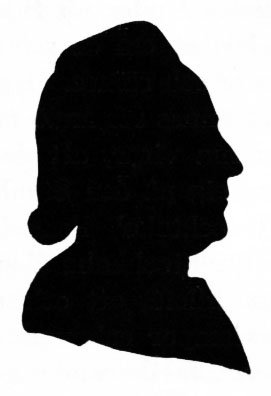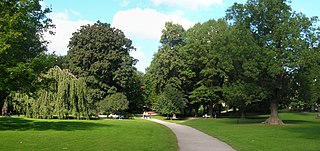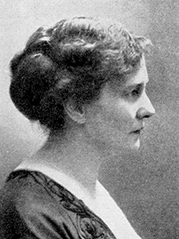Related Research Articles

Pehr Wilhelm Wargentin, Swedish astronomer and demographer.

Senda Berenson Abbott was a figure of women's basketball and the author of the first Basketball Guide for Women (1901–07). She was inducted into the Basketball Hall of Fame as a contributor on July 1, 1985, the International Jewish Sports Hall of Fame in 1987, and the Women's Basketball Hall of Fame in 1999.

Pehr Henrik Ling pioneered the teaching of physical education in Sweden. Ling is credited as the father of Swedish massage.
Elisabeth "Lisbetha" Olsdotter was a Swedish woman, who was executed on a number of different charges after having dressed as a man, served as a soldier and married a woman. On 24 October 1679 Svea Hovrätt in Stockholm brought the charges, earlier raised in the court of Långhundra Häradsting.

Petter Stenborg was a Swedish stage actor and theater director. He was the director of the Stenborg Company or Svenska Comoedi-truppen from 1758 onward and as such the director of the Humlegårdsteatern (1773–80) in Stockholm. Petter Stenborg played an important role in Swedish theater history: he was a member of the pioneer actors of the first Swedish national stage in Bollhuset, and as the leader of the Stenborg theatre company, one of only two professional Swedish language theater companies active in the mid 18th-century, he kept professional Swedish language theater alive from the closure of the public theater in Bollhuset in 1754, until the inauguration of the Royal Swedish Opera (1773) and Royal Dramatic Theatre (1788).

Helvig of Holstein was Queen of Sweden as the consort of King Magnus Ladulås. Her parents were Gerhard I, Count of Holstein-Itzehoe and Elisabeth of Mecklenburg.
Clara Aurora Liljenroth, also incorrectly referred to as Charlotta Liljeroth, was a Swedish scholar. She was one of few contemporary women to have attended and graduated from the gymnasium (1788) before they were officially opened to women, and attracted attention because of her unique position.

Anna Rheinholdsdotter Leuhusen, was the Abbess of St. Clare's Priory in Stockholm. She became known for her involvement in the Swedish War of Liberation between Sweden and Denmark in the 1520s.
Anna Åkerhielm or Åkerhjelm, née Anna Agriconia, was a Swedish writer, in languages including Latin, and traveller. She was the first woman in Sweden to have been ennobled for her own actions (1691).

Maria Euphrosyne of Zweibrücken was a countess palatine, a cousin and foster-sibling of Queen Christina of Sweden, and a sister of King Charles X of Sweden. She was also, after the accession of her brother Charles X on the throne (1654), a titular Royal Princess of Sweden.

The Stenborg Company was a Swedish Theatre Company, active in Sweden and Finland in the 18th century. It was also called Stenborgska skådebanorna, Svenska komeditruppen and Svenska Comedien ('Swedish Comedy') or Svenska Teatern. It is one of the most famous theatre troupes in its country's history. In the period of 1754–1773, between the closure of the first national Swedish theatre in Bollhuset and the foundation of the next, The Royal Swedish Opera and the Royal Dramatic Theatre, it was the only Theatre performing in the native language in Stockholm. It also has an importance for the history of Finland, being the first professional secular theatre troupe in this country. It was a traveling troupe in 1756–80 and then housed in several buildings.

Rosalie Ulrika Olivecrona, née Roos, was a Swedish feminist activist and writer. She is one of the three great pioneers of the organized women's rights movement in Sweden, alongside Fredrika Bremer and Sophie Adlersparre.

Nancy Fredrika Augusta Edberg was a Swedish swimmer, swimming instructor and bath house manager director, the first Swedish woman to work in these fields. Edberg was a pioneer in making the art of swimming and ice skating acceptable as activities for women in Sweden.

Martina Sofia Helena Bergman-Österberg was a Swedish-born physical education instructor and women's suffrage advocate who spent most of her working life in Britain. After studying gymnastics in Stockholm she moved to London, where she founded the first physical education instructors' college in England, to which she admitted women only. Bergman-Österberg pioneered teaching physical education as a full subject within the English school curriculum, with Swedish-style gymnastics at its core. She also advocated the wearing of gymslips by women playing sports, and played a pivotal role in the early development of netball. Bergman-Österberg was an advocate of women's emancipation, directly encouraging women to be active in sport and education, and also donating money to women's emancipation organisations in her native Sweden. Several of her students founded the Ling Association, which later became the Physical Education Association of the United Kingdom.

Ida Charlotte Natalie Zahle was a Danish reform pedagogue and pioneer of women's education. She founded N. Zahle's School in 1851.

Events from the year 1818 in Sweden
Elisabeth Blomqvist (1827–1901) was a Finnish educator. She was the principal of the state girl school Svenska fruntimmersskolan i Helsingfors between 1864 and 1898. She was a pioneer within women's education in Finland, a leading reformer and the founder of the first seminary of female teachers (1861).
Margaret Stansfeld was a British teacher and educator who was the founder and Principal of the Bedford Physical Training College from 1903 to 1945 and promoted physical education for girls.

Sigrid Agneta Sofia Elmblad, born Sigrid Agneta Sofia Pettersson, was a Swedish journalist, poet, translator and writer, who translated Der Ring des Nibelungen into Swedish and produced the first Swedish translation of the song of Saint Lucy. she produced her first poems under the pseudonym Toivo. Born in Stockholm to a Swedish father and Finnish mother, she was an early member of the Nya Idun society, rising to be chair between 1918 and 1921. After working as a journalist for the newspaper Dagens Nyheter, she travelled extensively with her husband, the opera singer Johannes Elmblad. While living in Bayreuth, she developed her interest in the music of Richard Wagner, which led her to translate his works into Swedish, including Parsifal in 1917, and the work of other German composers like Robert Schumann. She also wrote fiction for adults and children, as well as biographies for figures like Jenny Lind in 1920. She died in Sweden six years later.

Brahälla is a former hunting lodge, now a ruin, on a cliff above lake Noen in Tranås municipality, Jönköping county in Sweden.
References
- ↑ "Lindskog, släkt - Svenskt Biografiskt Lexikon". sok.riksarkivet.se. Retrieved 2024-11-03.
- ↑ Svenska Familj-Journalen / Band 24, årgång 1885
- ↑ Svenska Familj-Journalen / Band 24, årgång 1885